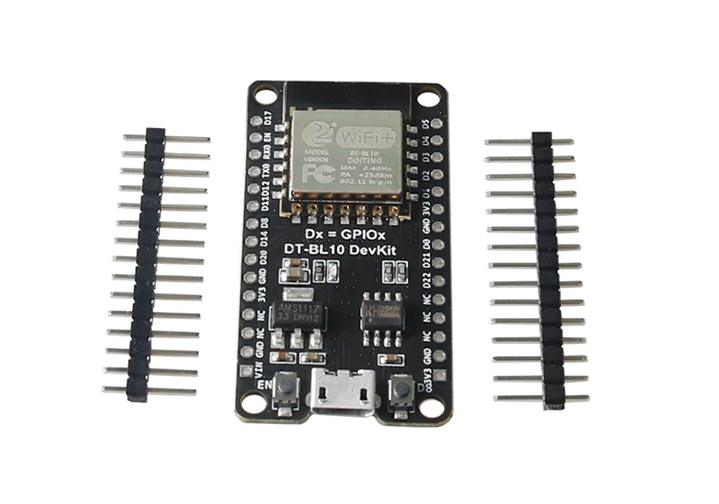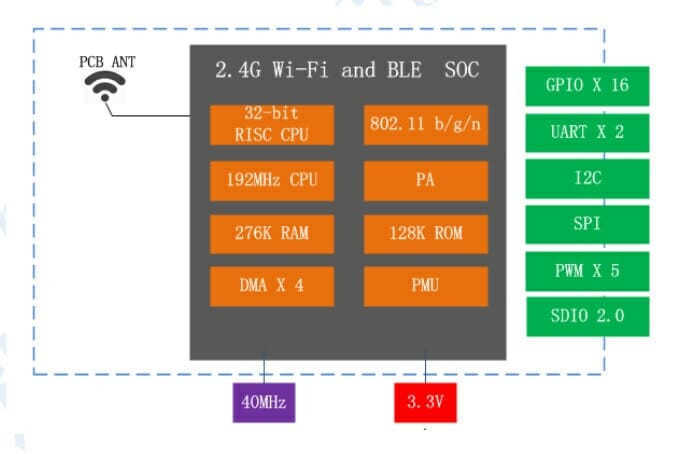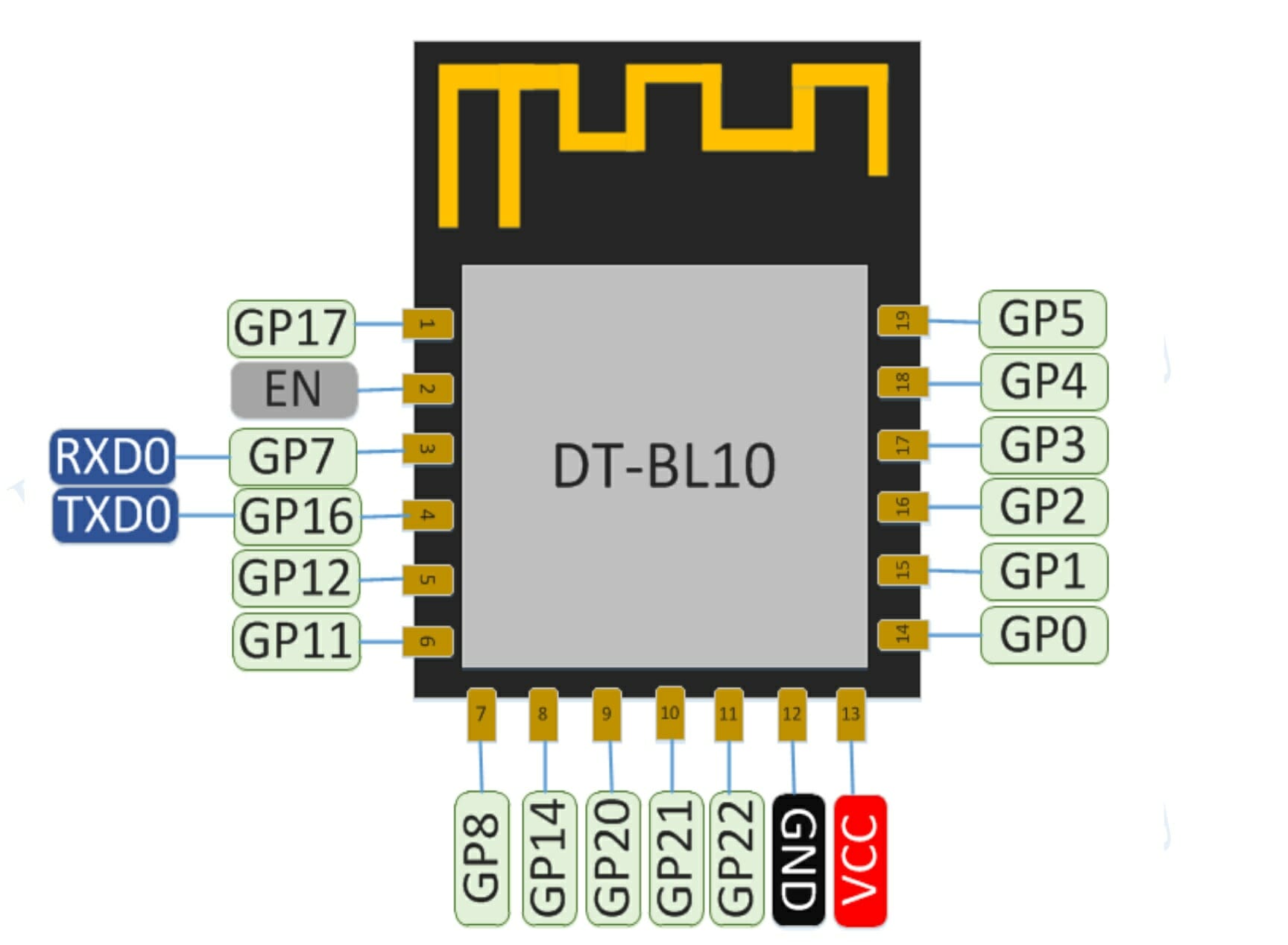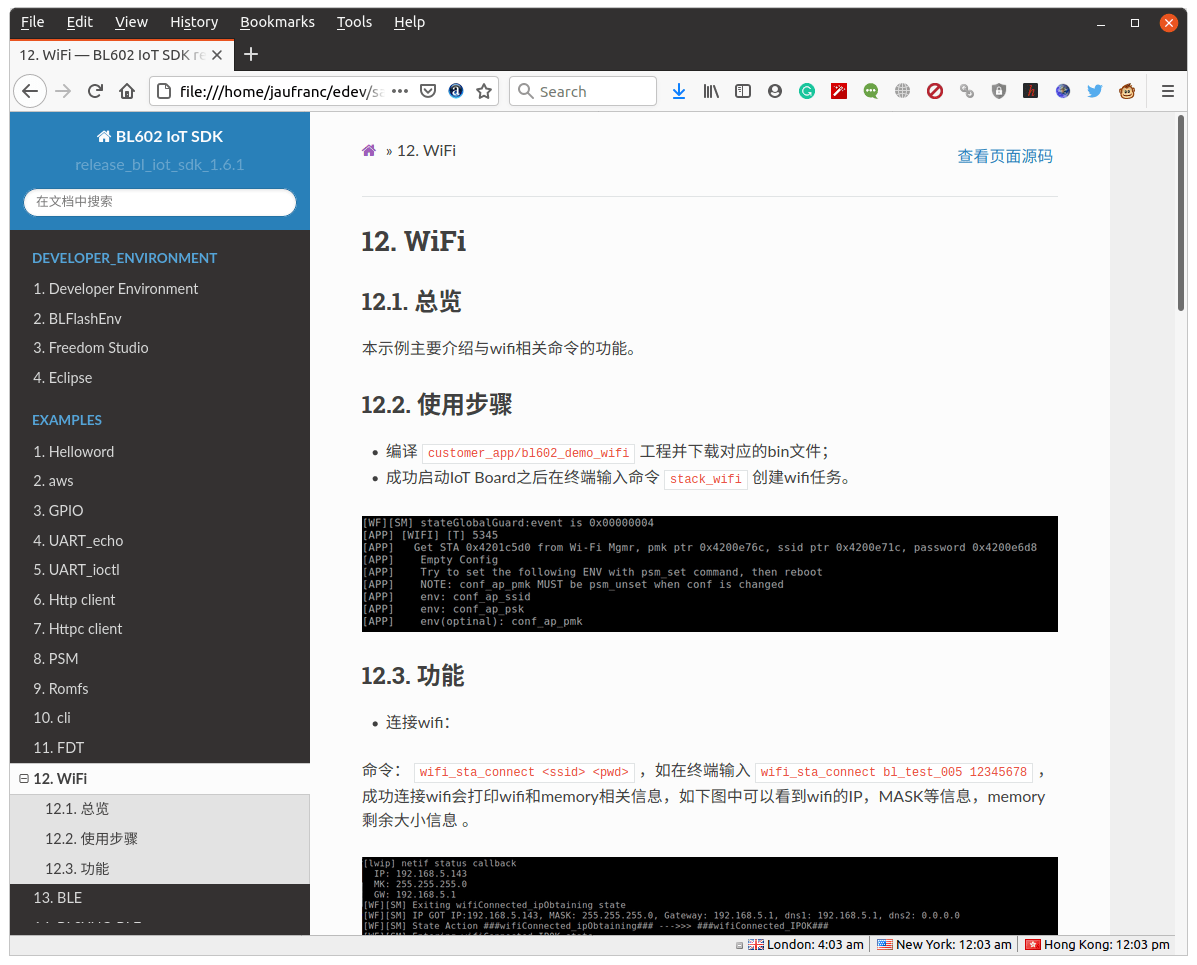Yesterday, we wrote about Bouffalo BL602 32-bit RISC-V WiFI and Bluetooth LE wireless SoC that should eventually compete with ESP8266 in terms of price but with more features, higher performance. and more resources like memory and storage.
At the time, I noted I could not find any tools for the processor, but I was informed a BL602 SDK (Doiting_BL) and documentation had already been released on Github. The basic readme and a user manual are already available in English, but the main documentation is still in Chinese with various examples to configure GPIO, YART, WiFi, and Bluetooth.
You’ll find the documentation in Github, as I could not find a website yet:
|
1 |
git clone https://github.com/SmartArduino/Doiting_BL |
Go to Doiting_BL/docs/html folder and then open index.html in your browser to access the documentation. The SDK works both in Windows and Linux and relies on either Eclipse & OpenOCD or Freedom Studio & OpenOCD. A graphical software called Dev Cube is used for flashing the board.
The documentation is made for a specific board Doit.am DT-BL10 development board powered by BL602 WiSoC that sells for $5 plus shipping on Aliexpress or 19.99 RMB on Taobao (about $3). We’re not at ESP8266 board price level ($2+) yet, but still affordable and interesting for evaluation.
 DT-BL10 module specifications:
DT-BL10 module specifications:
- SoC – Bouffalo BL602 RISC-V processor @ up to 192 Mhz with 276KB RAM, 128KB ROM with WiFi and Bluetooth
- Wireless
- 2.4GHz 802.11b/g/n WiFI 4 up to 65 Mbps (802.11n) or 26 Mbps (802.11g)
- Bluetooth LE 5.0
- PCB antenna
- 19x pin around module with
- Up to 16x GPIO
- 2x UART, 1x I2C, 1x SPI, 5x PWM
- 10-bit DAC, 12-bit ADC
- 1x EN
- 1x SDIO
- 3.3V and GND
- Supply Voltage – 3.0 to 3.6V
- Power consumption – Deep sleep mode: 22mA; deep standby mode: 2mA
- Dimensions – 20 x 16 x 3mm
- Temperature Range – -20°C to +85°C


The module is placed on a breakout board with two 15-pin 2.54mm pitch headers, EN and D8 buttons for flashing, as well as a micro USB port for power and programming.
Now that there are a public BL602 SDK and a cheap development board, we’ll have to see if it gains traction in the maker community, or whether it’s just not worth the effort since ESP8266 and ESP32 solutions are already cheap and well supported.
Thanks to fan for the tip.

Jean-Luc started CNX Software in 2010 as a part-time endeavor, before quitting his job as a software engineering manager, and starting to write daily news, and reviews full time later in 2011.
Support CNX Software! Donate via cryptocurrencies, become a Patron on Patreon, or purchase goods on Amazon or Aliexpress. We also use affiliate links in articles to earn commissions if you make a purchase after clicking on those links.





Such modules could possibly find their place into small devices like smartplugs or weather stations. They’re smaller than the ESPxx equivalent and seem easier to connect, and provide sufficient I/O for most use cases. Look at any nodemcu board, half of the components are used for the logic needed to program/reset/run the device (pull-ups, level shifters, en/gpio0, etc). In addition, by providing I2C/UART/PWM natively, it further simplifies deployments. I found a tiny W600-based TW-02 module in a smartplug that seems easy to use as well, which makes me think the device above could follow the same tracks. But before being adopted by the masses, they’ll need to support the Arduino environment and provide portable flash tools.
From a quick skim through the code it doesn’t look insanely smelly but it’s yet another lump the usual stuff like FreeRTOS, lwip etc.
I can find 3 on ali, but they all ask more then 28$ shipping
I’ve just noticed shipping varies a lot. It’s just $3 here, but to Europe I can see around $2 to UK, and $28 to Belgium and some others.
Might be better than ESP for Bluetooth to WiFi bridge and BT tracking for home automation
At this price they compete more with the ESP32 and they come out on the losing side. If the price comes down to ESP8266 levels, there may be a reason to look at these parts. Until then, not really.
Sipeed anounced on their channel <1$ price for their own board based on this chip.
Thanks, ordered 2 dev boards. if chip price is low, then this might be really interesting.
Thanks for the heads up on these. Have also bought two to give them a try. Hopefully they won’t end up in the drawer with all the the other ‘potential next things’ 😉 Given it is early days, and the information is still slim pickings, I have high hopes. Since pine64 is evaluating this, it will be interesting to see how much interest and support this MCU generates. If it gets support in IDEs like PlatformIO, and sits inbetween the ESP8266 and ESP32 in features, but at an ESP8266 price point, I can see the potential for it displacing the ESP8266’s market 😉
official SDK is now up here:
https://github.com/bouffalolab/bl_iot_sdk
Just received 3 of these boards ($15 for 3 on Banggood – same one pictured above) – has anyone succeeded in getting the tools to work? Instructions in chinese and they don’t seem to match the directory structure you get from cloning that git repo above (https://github.com/SmartArduino/Doiting_BL)
I haven’t tried any BL602 board yet, but you may check the work done on PineCone, as there’s some activity there.
https://www.cnx-software.com/2020/10/28/the-quest-for-a-blob-free-wifi-bluetooth-stack-for-bl602-wisoc/